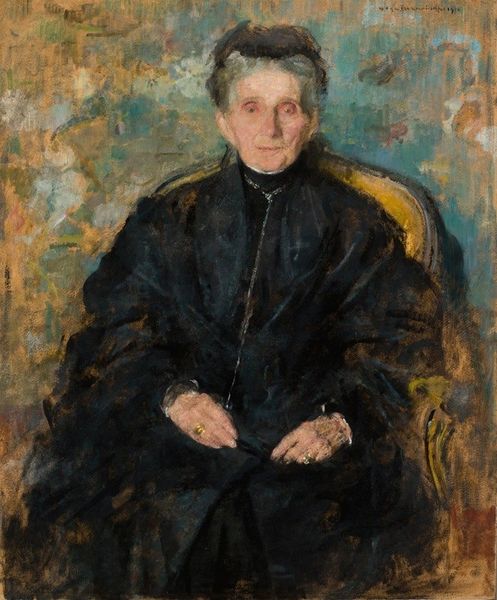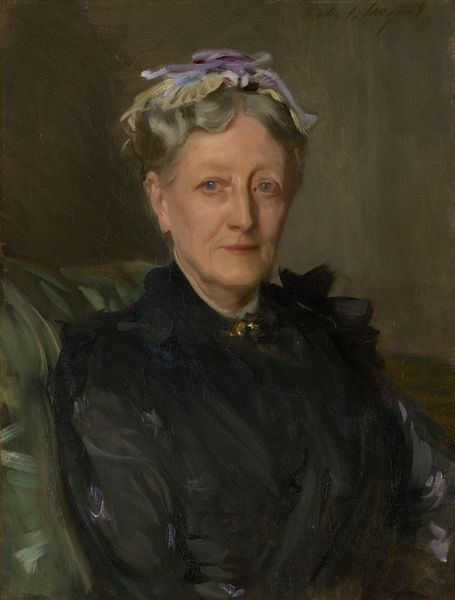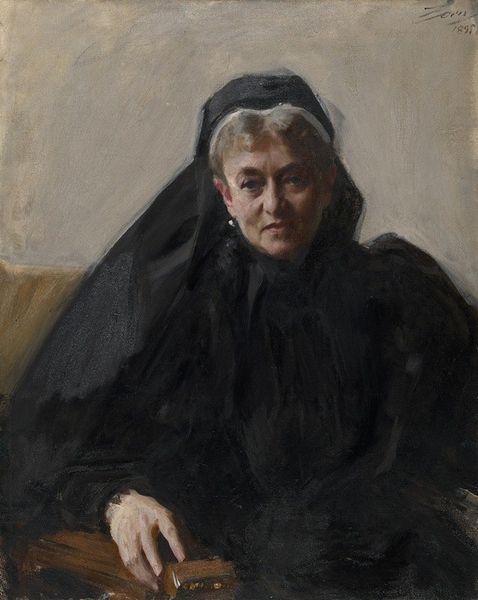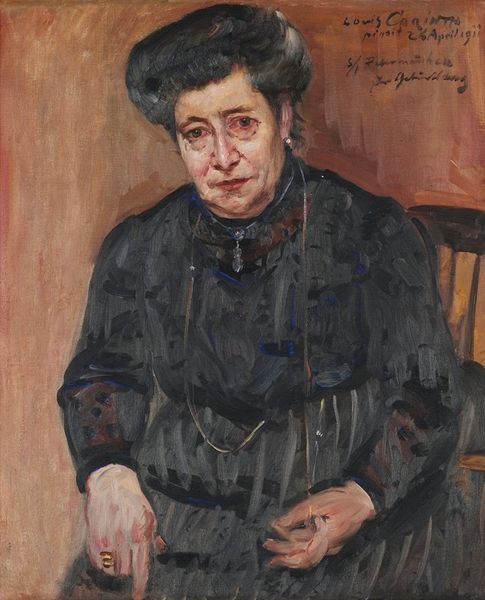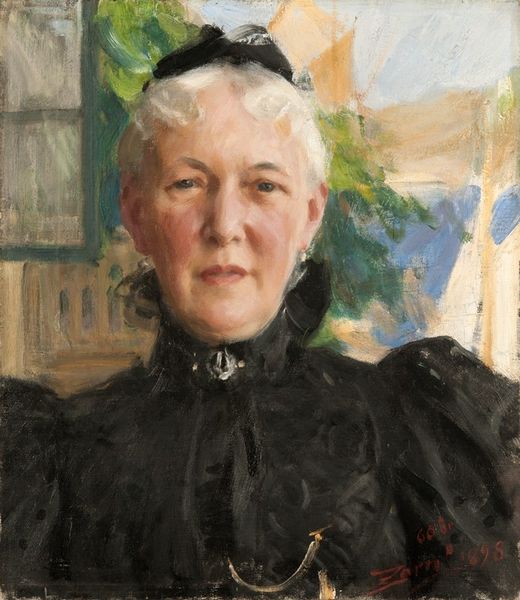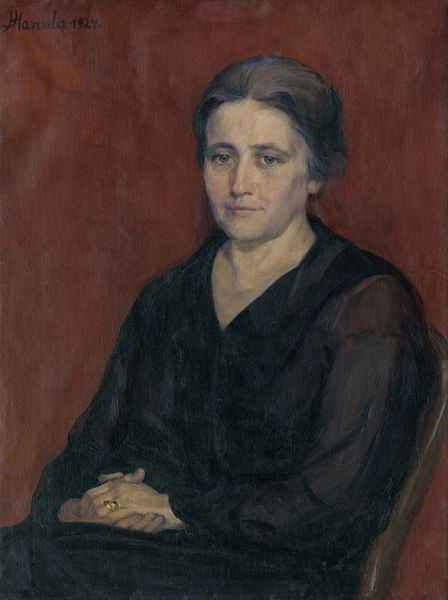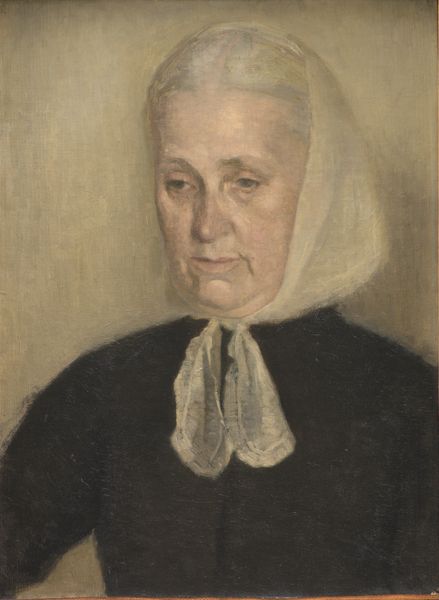
Dimensions: 54.5 x 51.5 cm
Copyright: Public domain
Curator: Here we have Magnus Enckell’s “Mother of the Artist,” painted in 1904. A stunning portrayal, wouldn’t you agree? Editor: Absolutely. There’s an immediate intimacy in the gaze. Her blue eyes pierce right through you, a sense of quiet contemplation, a subdued emotionality hanging heavy in the air. Curator: Indeed. The composition itself is quite formal; a classic portrait setup. Enckell masterfully uses the limited palette—blacks, grays, creams—to emphasize the structure of her face and the somber mood. Notice how the black dress and cap act almost as a frame. Editor: The choice of attire also speaks volumes about her societal role. Black often signified mourning, a period of grief and withdrawal from public life, highly indicative of Victorian values which permeated throughout European culture at the turn of the century. This, alongside her simple dress, suggests respectability and perhaps widowhood. Curator: Semiotically fascinating, isn't it? That subdued color palette works almost subliminally, creating a complex tapestry of meaning that plays into themes of memory and personal loss, if you allow such projection into portraiture. Editor: To that end, considering this is his mother, there are socio-psychological interpretations worth mentioning too. Artist’s depictions of parental figures often served not just as familial documentation but could become a canvas for addressing complex interpersonal and cultural themes surrounding kinship. Her calm repose might represent an attempt to idealize or immortalize his mother. Curator: Quite, and observe how Enckell uses Impressionistic brushstrokes in the background, providing movement and visual texture against the smoothness of her face and hand, a fascinating counterpoint of techniques that subtly evokes notions of the passage of time. Editor: Or conversely, such softness might represent how she recedes from his memory or shifts further towards subjective representation as memory typically distorts into generalized emotional landscapes. I think both notions highlight how visual artists create their own mythology regarding parental roles and the importance of capturing intimate portraits, to re-live connections beyond time. Curator: What truly holds my interest is how the painting manages to speak across historical contexts. The careful modulation of tone, the compositional geometry... it all coalesces into an utterly timeless study of humanity. Editor: A poignant testament, regardless, of both a mother's presence and enduring legacy through a painter's artistic reinterpretation of a figure so familiar, rendered for generations unfamiliar with the real sitter.
Comments
No comments
Be the first to comment and join the conversation on the ultimate creative platform.
